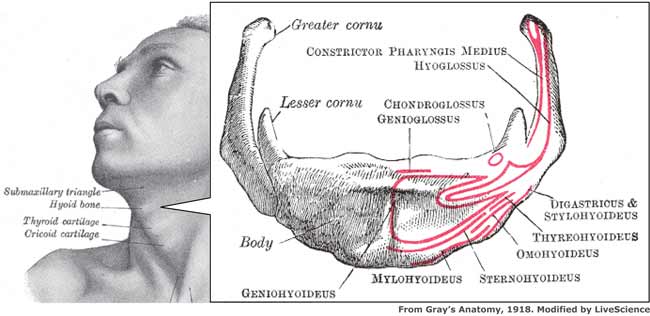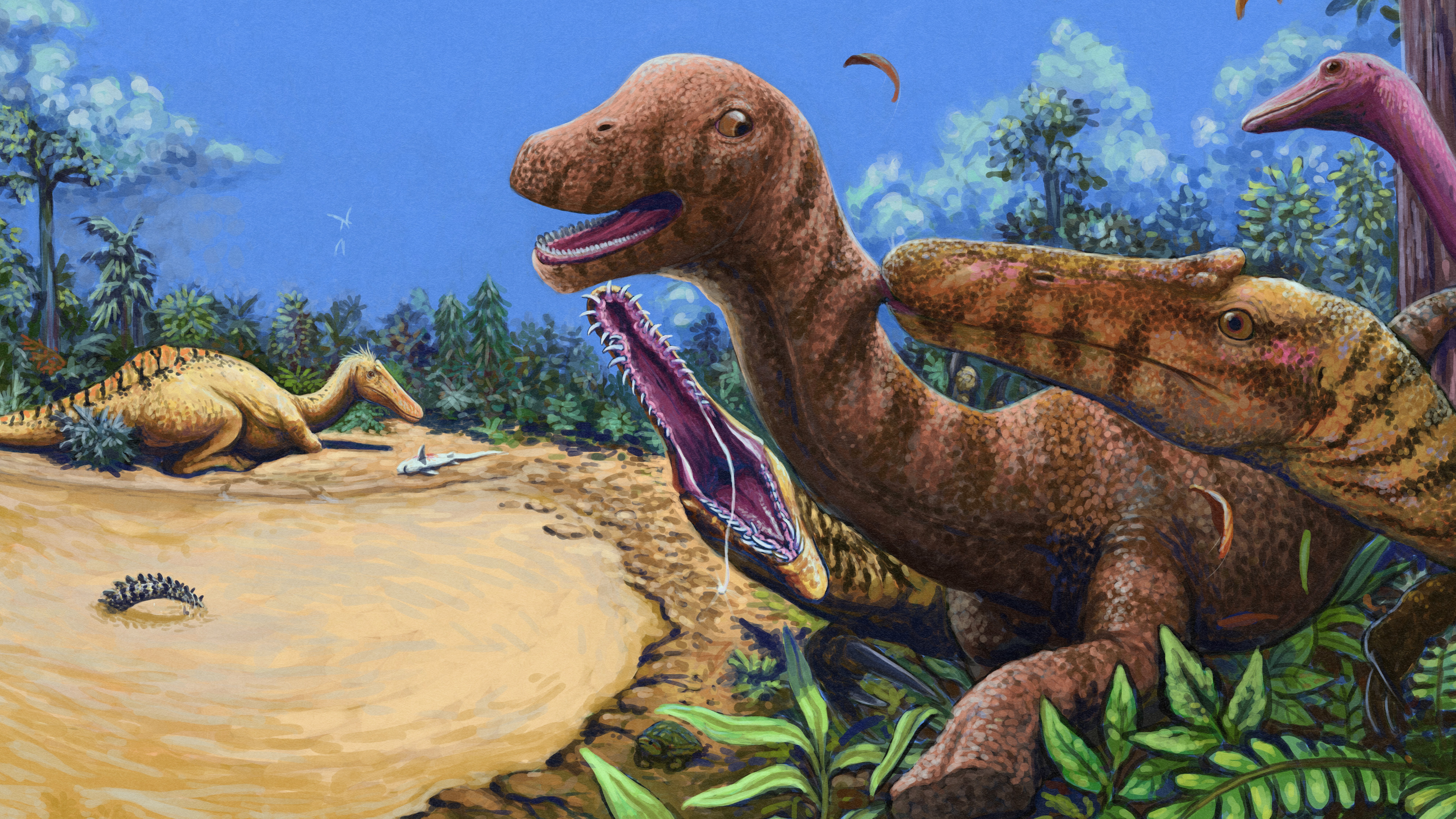How the Hyoid Bone Changed History

Each Monday, this column turns a page in history to explore the discoveries, events and people that continue to affect the history being made today.
Our gift of the gab is all due to a small horseshoe-shaped bone suspended in the muscles of our neck, like a piece of fruit trapped in Jell-O.
The hyoid bone, which is the only bone in the body not connected to any other, is the foundation of speech and is found only in humans and Neanderthals.
Other animals have versions of the hyoid, but only the human variety is in the right position to work in unison with the larynx and tongue and make us the chatterboxes of the animal world.
Without it, we'd still garble and hoot much like our chimpanzee cousins, scientists say.
The larynx drop
Humans likely had the capability to speak similarly to the way we do now about 300,000 years ago, based on discoveries of ancient hyoids. Alongside the hyoid, another important anatomical change happened around the same time that really kicked speaking into high gear – the larynx drop.
Get the world’s most fascinating discoveries delivered straight to your inbox.
In human infants, the larynx sits up high in the nasal cavity like a snorkel, so babies can drink and breathe at the same time. But, around three months of age, the larynx "drops" much lower in the throat, making choking easier but speech possible (the register of male voices lowers when the larynx drops again slightly during puberty).
No other animal has a larynx low enough to produce sounds as complex as our ancient ancestors did and as we do today, including our close relatives the chimpanzees, whose hyoid bone sits just a smidge too high to do anything but hoot and grunt.
Speech, language, talk shows
Those first words came from Homo heidelbergensis – the species of early human roaming the earth when our anatomy changed to allow complex speech. Heidelbergensis, believed to be the related to both modern humans and Neanderthals, probably wasn't Shakespeare-eloquent on his first try, but it wasn't long before people were chatting up a storm. As soon as speech became anatomically possible, putting the sounds together into a clear structure that everyone could understand – language, that is – became advantageous, anthropologists agree.
Complex speech meant individuals could share ideas and concepts like never before. It's no coincidence, say anthropologists, that we see the first hints of "culture" around this time as well. Neanderthals, whose hyoid and larynx is almost identical to early modern humans, started to show signs of symbolism and religion about 100,000 years ago, by burying their dead with grave offerings. Art and music followed soon after.
Neanderthal speech likely had fewer vowels and consonants, however, due to the restrictive shape of their nasal cavity, which was adapted for living in cold climates. Just that little disadvantage may have led to the demise of the Neanderthals as opposed to our chat-happy ancestors, some experts say.
Next week: How Writing Changed History



